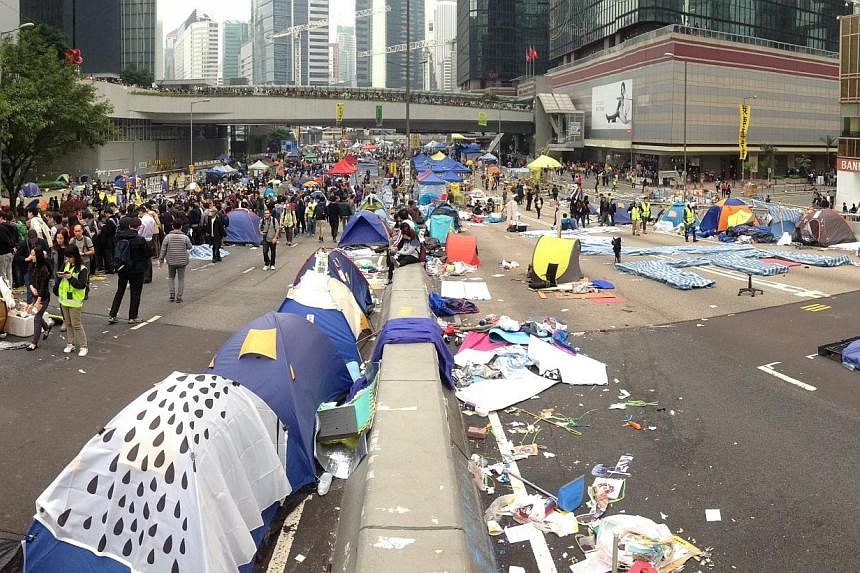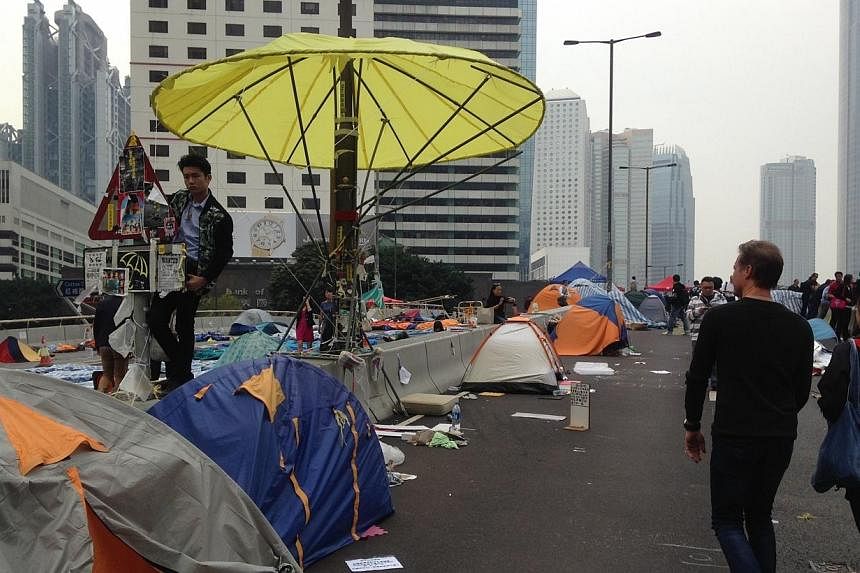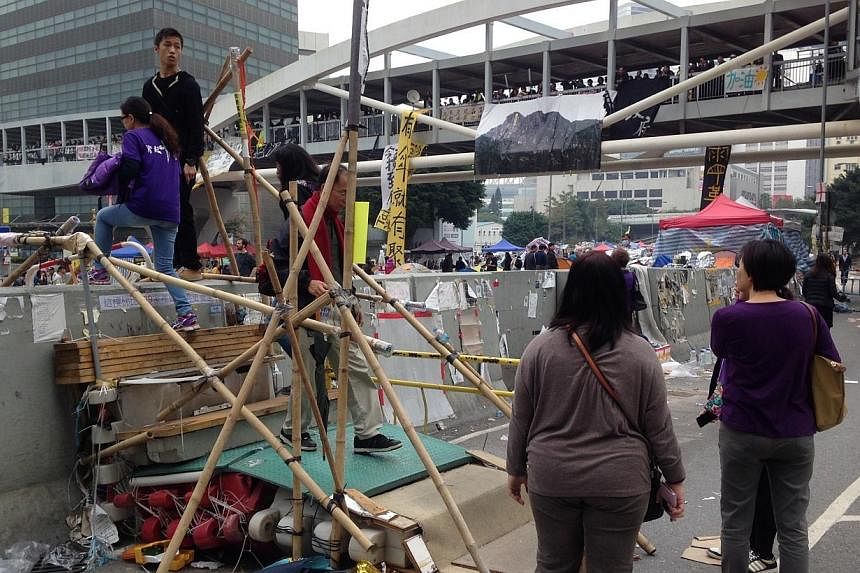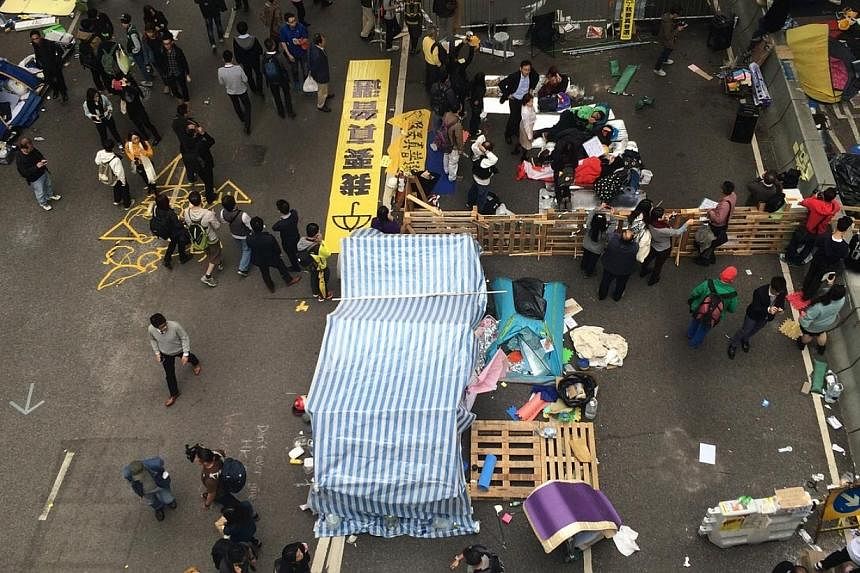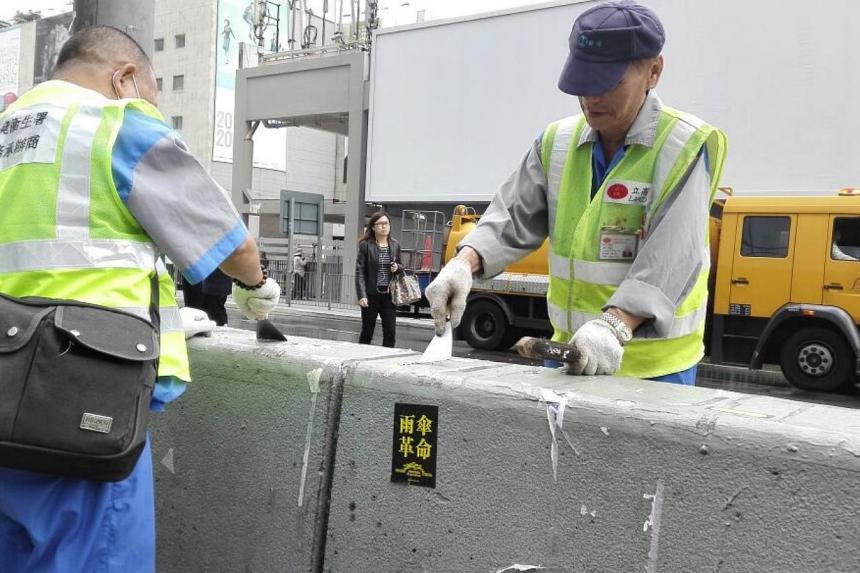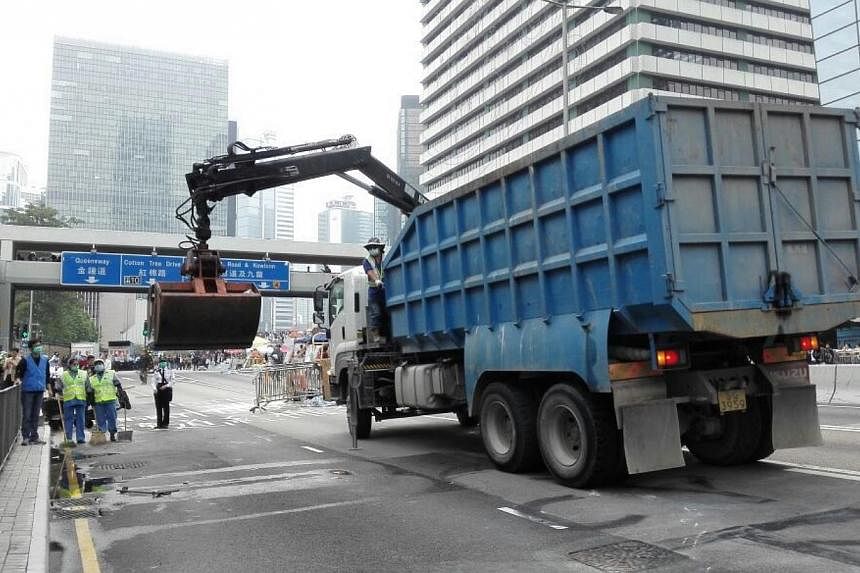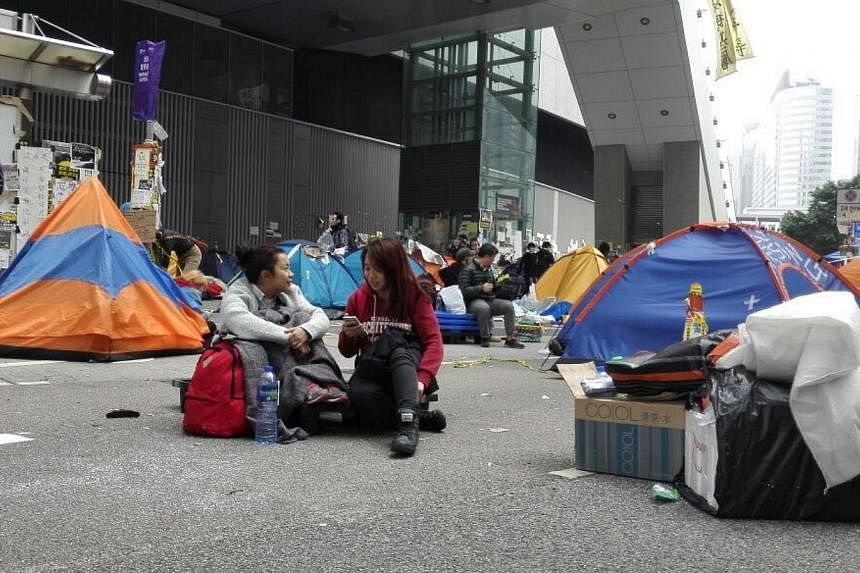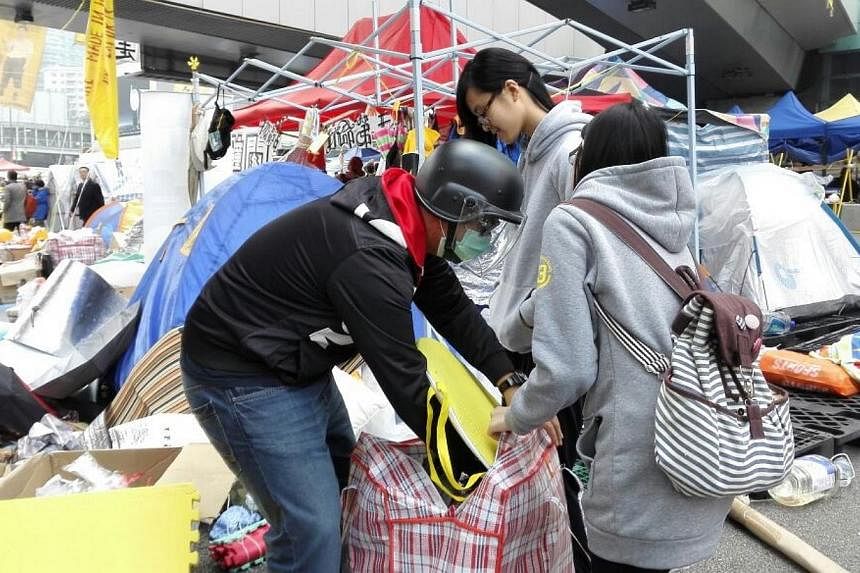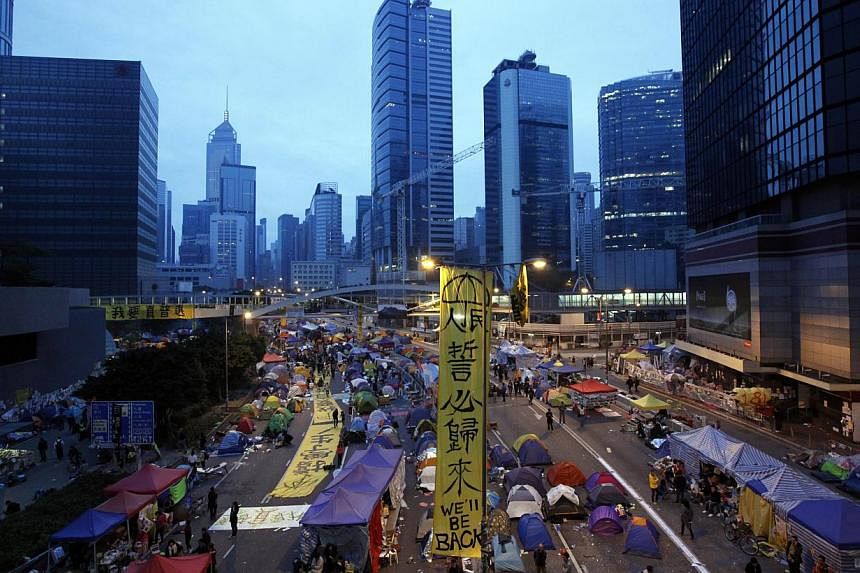IT IS the end of a road for Hong Kong's Occupy Central protesters and their supporters, with 209 taken away as the main protest site in Admiralty was demolished.
But the journey to fight for greater democracy will continue, they vow. "We will be back!" they chanted, as they were led away by the police.
Those detained yesterday include student leader Alex Chow and prominent supporters such as veteran activist Martin Lee and Mr Jimmy Lai, who stepped down as Apple Daily's publisher after his arrest. Scholarism leader Joshua Wong was not present, saying he cannot be arrested again while out on bail from his previous arrest in Mong Kok.
In the evening, lorry cranes moved in to scoop up the abandoned tents, banners and wooden pallets before the six-lane thoroughfare was re-opened to traffic - the first time in almost 11 weeks.
The dismantling of the Admiralty protest site effectively signals the end of the 75-day-long Occupy movement. It maintains just a minimal presence at the third and final site at Causeway Bay, which is likely to be removed today. A protest site at Mong Kok was dismantled two weeks ago.
It was here, next to the government headquarters along Harcourt Road in the business district, that protesters first converged, and then clashed with the police on Sept 28.
While the initial crowd was spurred by Beijing's decision to set strict rules on how Hong Kongers can elect their chief executive in 2017, the use of pepper spray and tear gas by the police further galvanised hundreds of thousands onto the streets.
Over the subsequent days, the student-led campaign saw its fortunes ebb and flow. After an initial euphoria from massive public support, it struggled with internal fissures over a viable exit strategy. A public increasingly fed up with the road blockades later withdrew its support.
But even with the roads finally cleared, Beijing and the Hong Kong government will have to grapple with the continuing ramifications of the movement - the city's biggest political crisis since the 1997 handover.
For one thing, it has politicised a new generation of Hong Kongers, who make it clear that their demands for unfettered rights for the people to choose their leader and less interference from Beijing will not go away.
Says social worker K.C. Lau. 24: "I have recorded many stories shared by other protesters and I think I will write a book or maybe launch an online magazine, focusing on how ordinary Hong Kongers fight for democracy."
"The fire has been lit and we should not let it burn down. It is our responsibility to keep it going."
Going forward, the government will have to build consensus on the constitutional reform. The next stage is a second round of public consultation. The government then needs to table a proposal for voting in the legislature.
Despite fears that yesterday's clearance operation could see violent skirmishes between protesters and police, it went off largely peacefully.
In the morning, bailiffs removed barricades from sections of the road covered under a court injunction applied for by a bus company. The police then gave repeated warnings that they were moving in into the rest of the site.
While most protesters left, a core group remained, sitting in and interlocking their arms. They did not resist when the police removed them forcibly, with some walking and others carried to waiting police vans.
There was no sight of the "radical groups" inciting violence which the police warned about earlier. Overnight arrests of a couple of members of groups like the League of Social Democrats on suspicion of unlawful assembly could have cast a chilling effect.
A government statement last night said that the operation was conducted "smoothly in general".


